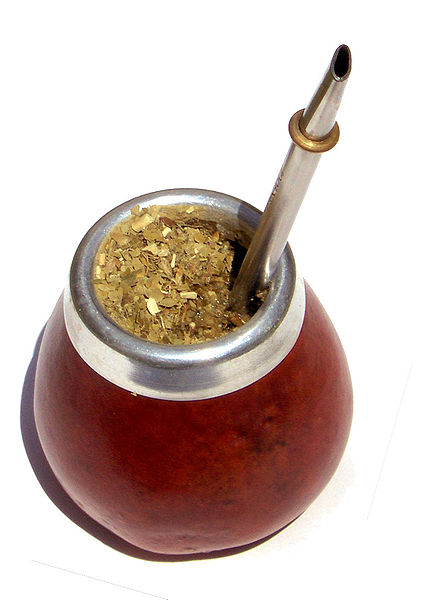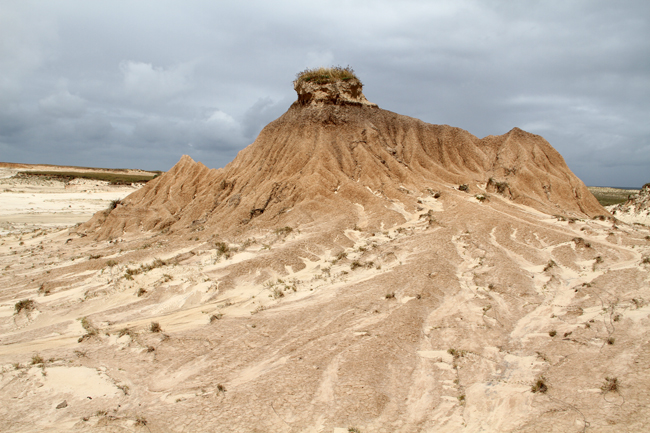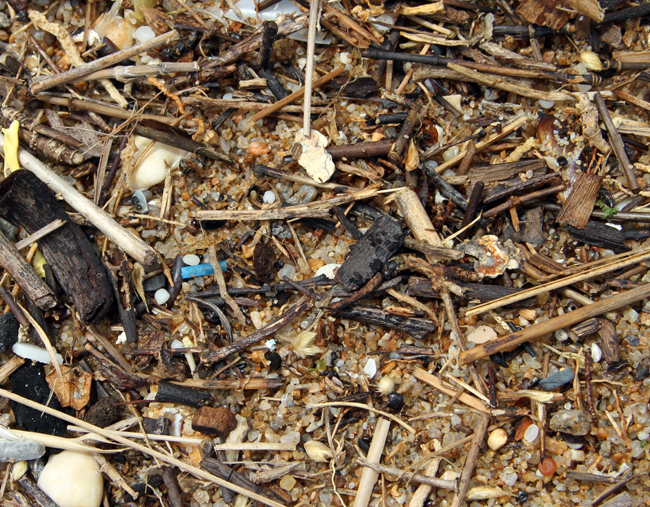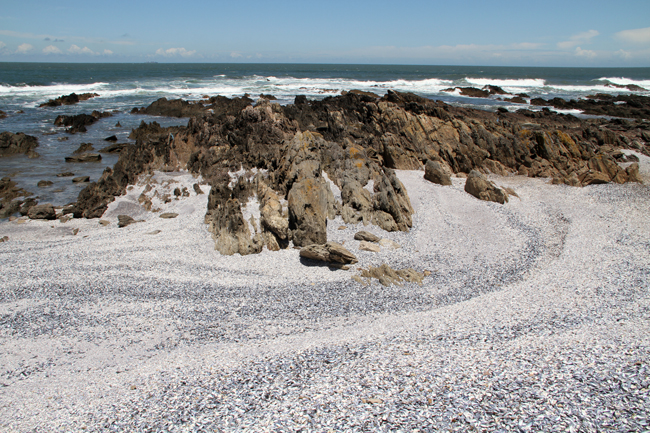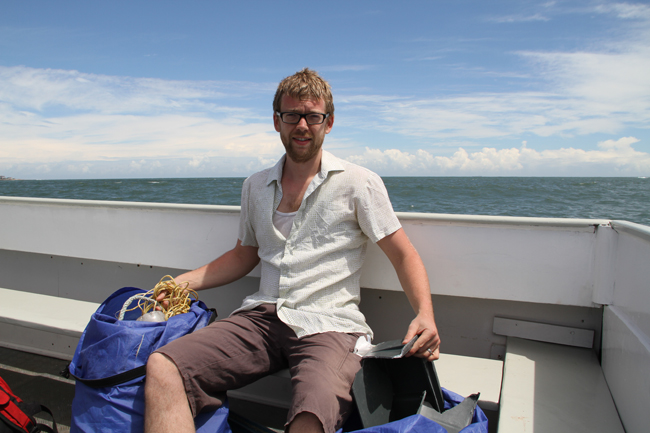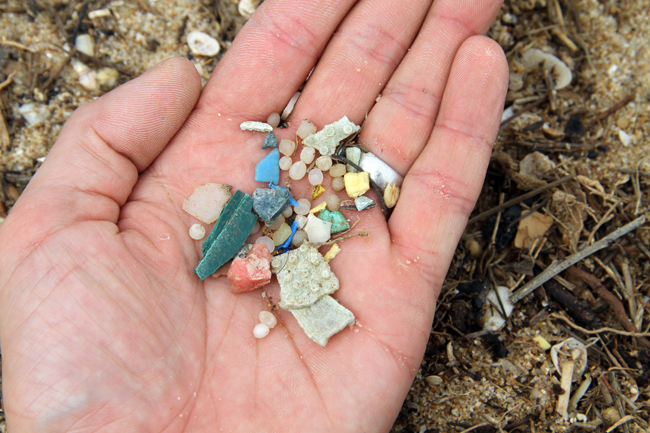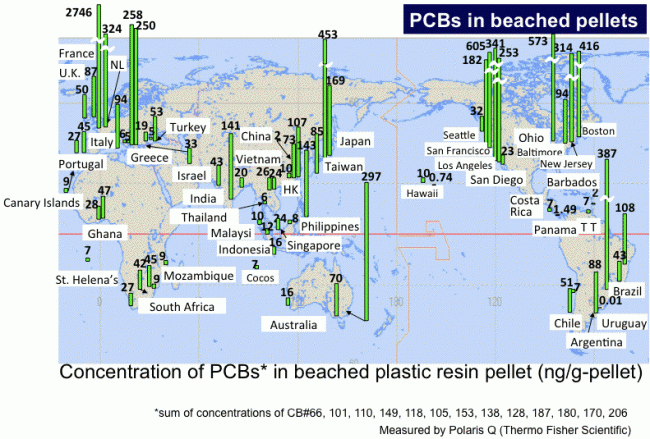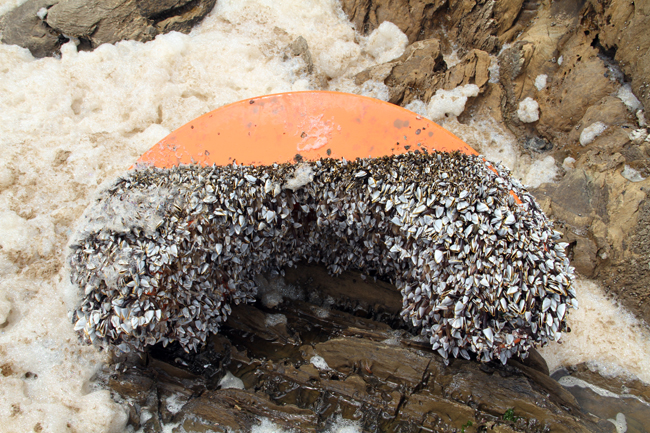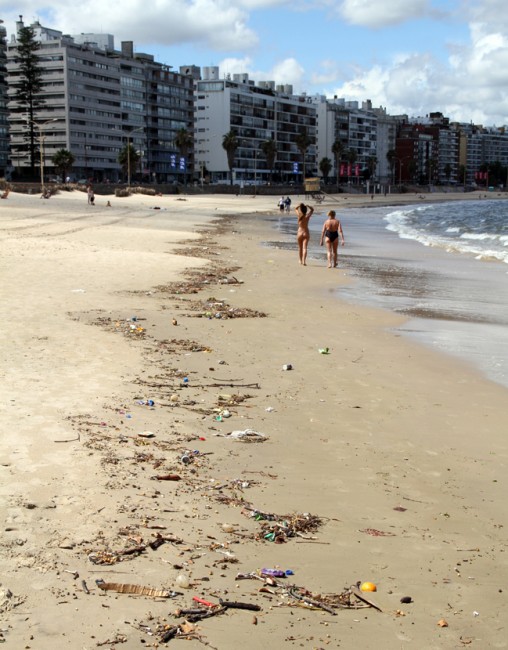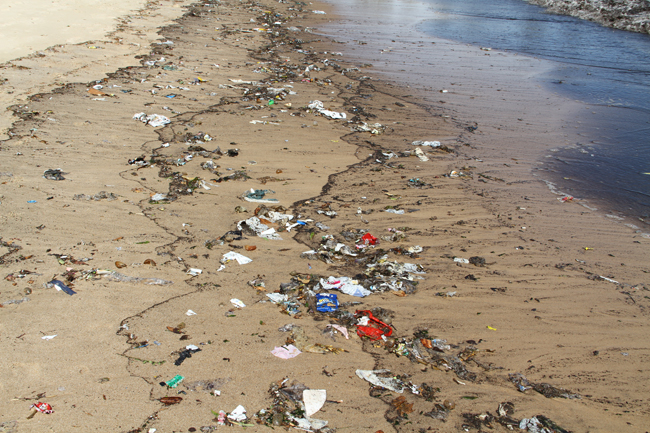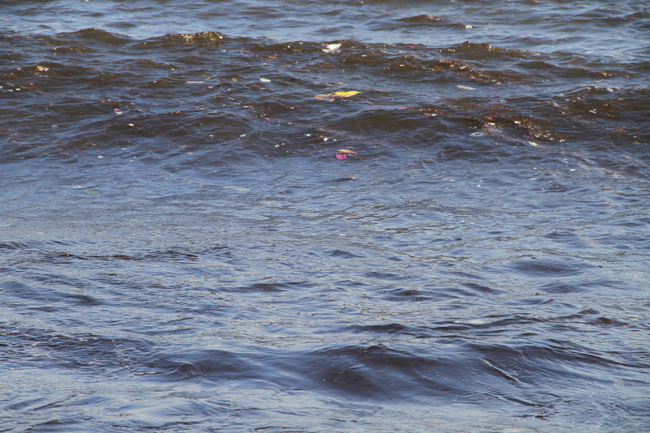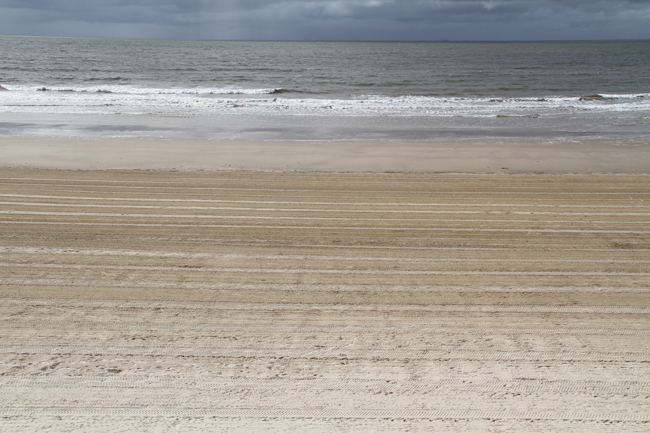Early in the morning we decide to drive to La Paloma, a three hour marathon in a virgin rental Chevy (we tripled the amount of KM on the counter) through pouring rain. Just as I’m getting discouraged by the prospect of having to pick plastic trash from the beach in the rain without raincoat, the sun appears. Today Manuel decided to bring Mate, a traditional South American drink, made of steeping dried leaves of yerba maté. Hot water is pored over the leaves and through a metal straw the energizing liquid is sucked up. Now I know why so many people walk around on the street with this weird bowl and a huge reservoir of hot water supply; it works! The foggy feeling is fading away and thanks to the mate I make it through the day.
We go to the area with has rocks rather than just sand, so cleaning machines can’t get to that place. Result: more plastic. The most shocking discovery however remains the amount of virgin plastic, the first stage of any plastic product (see also previous post). Later we drive to an area were humans rarely pass by. Water erodes the soil and creates beautiful canyons and mountains. Close to the ocean you see the polluted flood line very clearly. Also here there is an abundance of plastic pellets. It is hard to see in the sand but between the dark rubble of the floodline it is clearly visible; highly poisonous particles permanently presenting a new possible definition of the sustainable mantra People Planet Profit.
It starts to rain again and we follow the sun towards Brasil. A game we keep playing until we decide to return (again through pouring rain).
On the way back I keep thinking about the plastic nurdles: why does no one do something about it? Why is it not regulated? Why is the oil industry allowed to litter so much virgin plastic during their production and transportation process? Why do so little people know about its existence, let alone it’s growing lethal force. Manuel, who is coming to these beaches his whole life never noticed the nurdles, neither did his friends. He will never look at the pristine beach in the same way (my fault), but hopefully when he finishes his law studies he will be a future fighter or influential regulator of a better and healthier (ocean) life and definitely promoting a more representing slogan of his home country which is currently Uruguay Natural!
José Mujica, may the (courage to) force (change) be with you!
